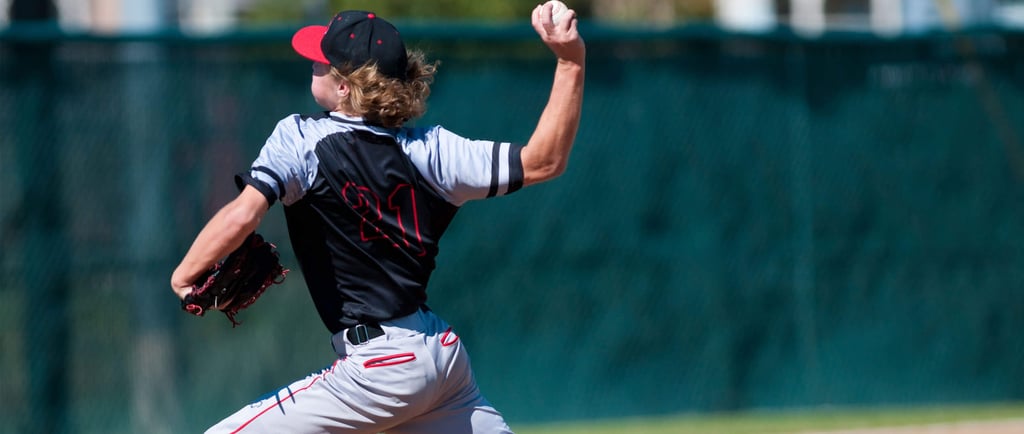Why Baseball Players Need Rest & Recovery to Perform Better
Learn why rest and recovery are essential for baseball performance, injury prevention, and long-term development — especially in youth athletes.


Most players (and parents) know the value of hard work — but what often gets overlooked is what happens between the work.
Rest and recovery aren’t luxuries for baseball players. They’re essential parts of development. In fact, some of the most important improvements in strength, coordination, and performance happen when players aren’t swinging a bat or lifting a weight.
At Swing Lab, we work with dedicated athletes who want to get better. But we also coach them — and their families — to understand that more isn’t always better. Recovery is where the gains happen.
Here’s why rest and recovery are vital to long-term performance in baseball.
What Is Recovery — and Why Does It Matter?
Recovery refers to everything your body and mind do to repair and rebuild after activity. That includes:
Muscle repair
Nervous system recovery
Replenishment of energy stores
Mental reset and emotional decompression
Without proper rest, the body breaks down faster than it can build back up — leading to fatigue, poor performance, and in some cases, long-term injury.
The Benefits of Rest & Recovery for Baseball Players
Improved strength and speed
Better focus and decision-making
Lower injury risk (especially from overuse)
More consistent performance
Faster reaction time and bat speed
Healthier joints, tendons, and growth plates in youth players
Improved mood, confidence, and motivation
More sustainable long-term development
In short: recovery supports every goal a player is training for.
Signs Your Athlete Might Be Overtraining
Decreased performance or slower swing speed
Frequent soreness or stiffness that doesn’t go away
Trouble sleeping or feeling tired all day
Increased irritability or loss of interest in the game
Higher risk of nagging injuries (elbow, shoulder, hamstring, etc.)
A “burned out” feeling, even if they love baseball
If any of these signs show up, it’s time to adjust training and increase rest.
How Much Rest Do Youth Baseball Players Need?
This depends on age, training load, and the player’s recovery habits — but here are some general guidelines:
At least 1–2 full rest days per week
Avoid hitting or throwing every single day
After a tournament weekend: schedule an easy day or full rest the following Monday
After strength training: give 48 hours before targeting the same muscle groups again
Prioritize 8–10 hours of sleep per night for youth athletes
Every player is different. But none are too young to benefit from rest.
What Counts as “Recovery”?
Recovery doesn’t mean doing nothing. It can be active or passive:
Passive Recovery (no physical activity)
Sleep
Naps
Rest days from all sports
Meditation or breathwork
Active Recovery (light, restorative movement)
Walking, light jogging, or swimming
Foam rolling or stretching
Yoga or mobility drills
Light tee work or shadow swings at 50% effort
Playing another sport just for fun
The key is to reduce physical and mental stress while promoting blood flow and muscle repair.
The Role of Sleep in Baseball Performance
Sleep is arguably the most powerful recovery tool a player has — and it’s free.
Here’s what happens during sleep:
Muscles rebuild
The brain processes new motor patterns
Hormones for growth and recovery are released
The immune system strengthens
Youth players should aim for:
Ages 8–12: 9–11 hours per night
Ages 13–18: 8–10 hours per night
Encourage good sleep habits: screens off before bed, consistent sleep schedule, and a cool, quiet bedroom.
How to Build Recovery Into Your Weekly Baseball Schedule
Here’s a sample structure for a youth baseball player:
Day Activity
Monday → Active recovery or full rest
Tuesday → Practice or cage work
Wednesday → Light mobility + strength training
Thursday → Skill work (hitting or fielding)
Friday → Practice or rest depending on weekend load
Saturday → Game or tournament
Sunday → Game or active recovery (light jog, stretch)
Adjust based on tournament play, weather, school workload, or signs of fatigue.
What Coaches & Parents Should Remember
More swings don’t always mean more progress
Rested athletes absorb coaching better
Pushing through fatigue often leads to bad habits or injury
Recovery is part of training — not time away from it
Athletes who recover well don’t just play harder — they play longer.
Final Thoughts
Baseball is a game of reps, timing, and consistency — but it’s also a game of sustainability. Teaching youth players to value recovery sets them up for a longer, healthier, and more successful athletic future.
At Swing Lab, we emphasize a complete approach to player development — including recovery. If your athlete is training hard but plateauing, we’ll help evaluate the balance of work and rest, and build a custom plan for progress.
From: shutterstock
Excuses don't get walk-offs
get in the lab
info@lexasport.com
+1 (972) 638-0872
© 2025. All rights reserved.
NTX Swing Lab is a division of LEXA Sport
